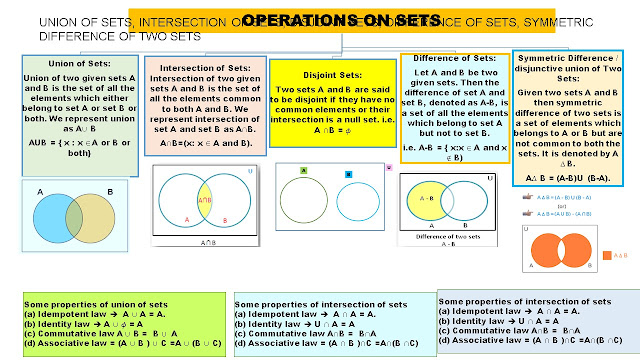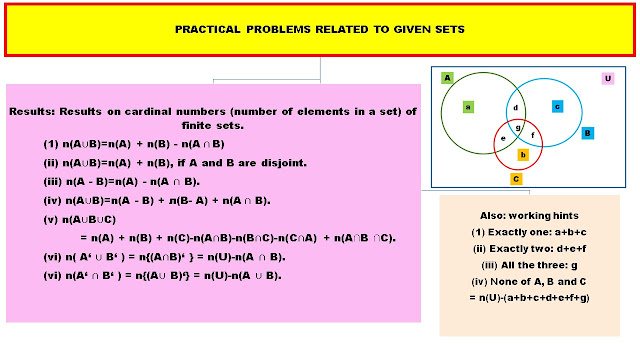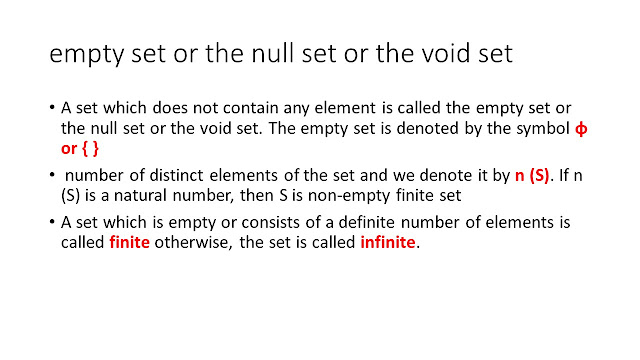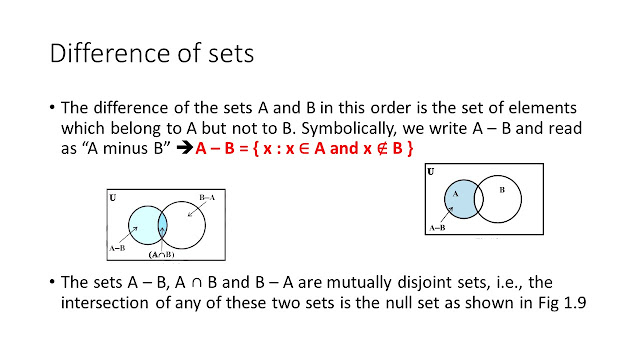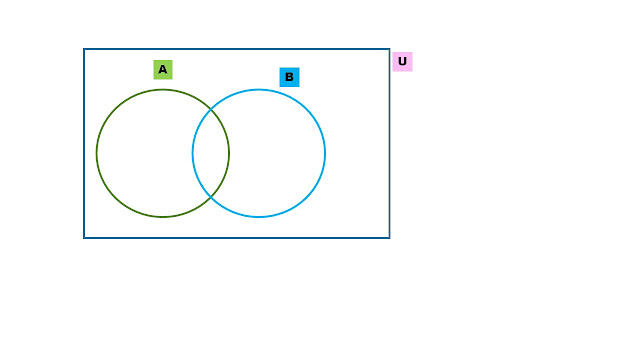ANSWER KEY CLASS 11 HOLIDAY TASK
Very Short (Objective Type) / Short Answer Type
1. The set of odd prime numbers less than 10 is
(a) {1, 3, 5, 7, 9}
(b) {1, 3, 5, 7}
(c) {3, 5, 7}
(d) {3,5}
1. (c), prime numbers have exactly 2 factors.
2. The elements of set A, satisfy the property n2n+1n∈ N, n < 5 for their elements. The element which does not belong to the set is
3/7
4/9
⅓
5/11
2. (d), as for n=5.{n}/{2n+1}={5}/{11}, but n<5
3. The set of prime numbers less than 10 in the roster form is
(a) {1, 2, ... 9}
(c) {1, 2, 3, 5, 7, 9}
(b) {1, 2, 4, 6, 8}
(d) {2, 3, 5, 7}
3. (d), Prime number has exactly 2 factors 1 and itself. 1 is not a prime number. The roster form is \{2,3,5,7\}
4. All the elements of the set {x: x ∈ Z, |x| ≤ 3} can be listed as
(a) {0, 1, 2, 3}
(c) {-3, -2, -1, 0}
(b) {-3,-2,-1, 0, 1, 2, 3}
(d) {0, 1, 2}
4(b), \{-3,-2,-1,0,1,2,3\}
5. Is the collection of 'All weaker students of a school' a well defined set?
5. Weaker is not well defined; we can't list the elements, as a student may be weaker for one but may be average or above average for the other.
6. Is the collection of 'All days of a week beginning with letter T' a well defined set?
6. Well defined, we can list the elements.
7. Write the set of integers between-5 and 5 in the roster form.
7. {-4,-3,-2,-1,0,1,2,3,4}
8. Represent the set of rational numbers between 6 and 7 in the set builder form.
8. {x:x Q,6<x<7}
9. Write the set {an : a₁ = -1, an=2a (n-1) + 3, n is a natural number between 1 and 5} in the roster form.
9. \{-1,1,5,13\}
Very Short (Objective Type) / Short
1. Let set A = {2, 4, 6, 8} and set B = {2, 2, 4, 6, 8, 6} then sets A and B are
(a) equal sets
(c) (a) and (b) both
(b) unequal sets
(d) none of these
1. (a), when a set is written in roster form repeated elements are written only once.
2. The set of even prime numbers is a finite set. State true or false.
2. True, as set contains only one element.
3. Is the set of integers greater than 1000 a finite set or an infinite set
3. An infinite set, as integers greater than 1000 are not countable.
4. Is the set of circles passing through three non-collinear points an infinite set?
4. No, only one circle can pass through three non-collinear points.
5. Is the set {x ∈ N : x² = 9} an infinite set?
5. No, given {x ∈ N : x² = 9} only natural number, such that x2 = 9 is 3.
.. Set is {3}, a finite set.
6. State true or false: {a,b} and {a, a, b, b, a} are equal sets.
6. True, as in the roster form repeated elements are dropped out.
7. State whether the given statement is true or false. "If two sets are equal then they are equivalent also."
7. True, same cardinal number
8. Given sets, A = {A, E, S, T}.
B = {x: x is a letter of the word ASSET}. Classify the given pair of sets as 'equal' or 'equivalent' or "none of these".
8. Equal, A = {A, E, S, T}, B = {A, E, S, T}
Very Short (Objective Type) / Short Answer Type
1. In open interval (a, b) all the real numbers lying between a and b belong, but a, b themselves to this interval
(a) belong
(b) do not belong
(c) a including but b excluding
(d) a excluding but b including
1. (b), in open interval (a, b), a and b do not belong to the interval.
2. The given real number line represent various intervals as subsets of real number, find the correct option to representation.
(a) (a, b], [a, b), [a, b], (a, b)
(b) [a, b], (a, b), (a, b], [a, b)
(c) (a, b), [a, b], [a, b), (a, b]
(d) (a, b), (a, b], [a, b), [a, b]
2. (c),
—--- represents open interval; a and b do a b not belong.
—- represents closed interval; a, b belong.
—represents open interval from a to b, including a but excluding b.
—-- represents open interval from a to b, excluding a but including b.
3. Given the set A = {1, 3, 5}, B = {2, 4, 6}, C = {0, 2, 4, 6, 8}. Which of the following can be considered as a universal set(s) for sets A, B, C?
(i) {0, 1, 2, 3, 4, 5, 6}
(ii) ф
(ⅲ) {0, 1, 2, 3, 4, 5, 6, 7, 8, 9, 10}
(iv) {1, 2, 3, 4, 5, 6, 7, 8}
3. (ii) as A, B, C are subsets of (0, 1, 2, 3, 4, 5, 6, 7, 8, 9, 10}
[NCERT]
4. Write all subsets of set A = {, 1}.[NCT 2012]
4. Subsets of set A are $, {$}, {1}, {0, 1}
5. Insert the proper sign, for each of the following, from the signs ,
(1) 1 —----- {1, 3, 5}
(ii) {7}--------- {5, 6, 9, 7, 3}
(iii) {7} —--------{3, 5, 6, {7}, 9}
(iv) {3, 4, 5} —- —---{ 5, 6, 3, 4, 7}
(v) {3,4}}.............. {1, 2, 3, 4, 5, 6}
5.
(i) (ii) (iii) (iv) (v) NOT SUBSET OF
6. Ifset A={4"-3n-1: n ∈ N} and set B = {9(n-1): n ∈ N}.
Show that A B.
[HOTS]
6. Consider
set A = {4"-3n-1:n∈N} = {0,9, 54, 243, ...} i.e. elements are multiple of 9.
set B = {9(n-1): n ∈ N} = {0, 9, 18, 27, ...}
We notice all the elements of set A are in B .. A B
7. Two finite sets have m and n elements. The total number of subsets of the first set is 56 more than the total number of subsets of the second set. Find the values of m and n.
[NCT 2019]
7. Number of subsets of A =2m
Number of subsets of B = 2n
2m- 2n = 56
2n (2m-n-1) = 2³ (2³-1)
⇒ n = 3 and m-n=3
n=3 and m = 6.








